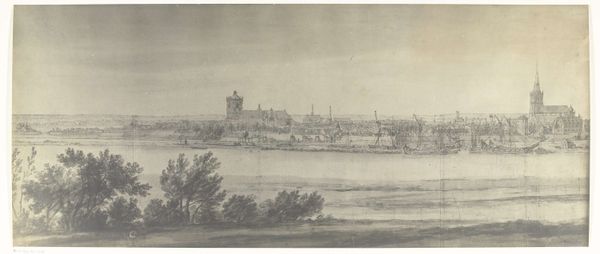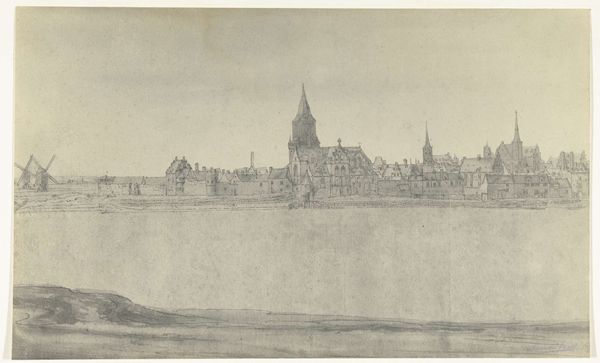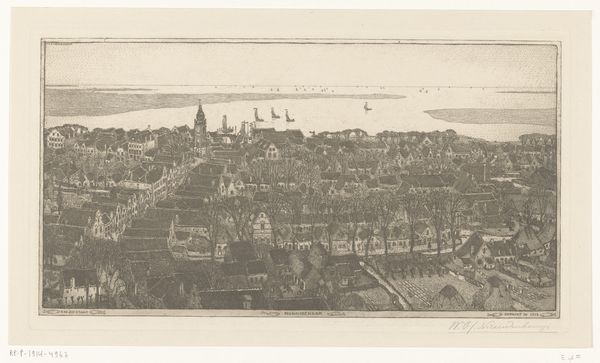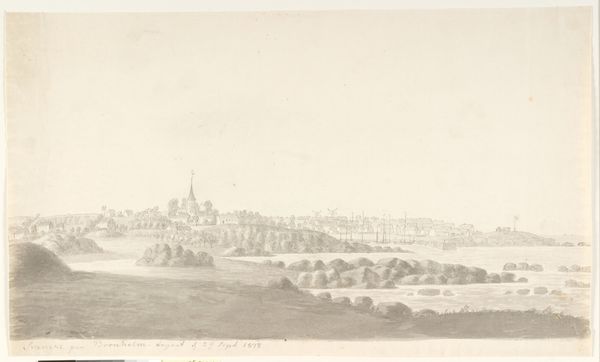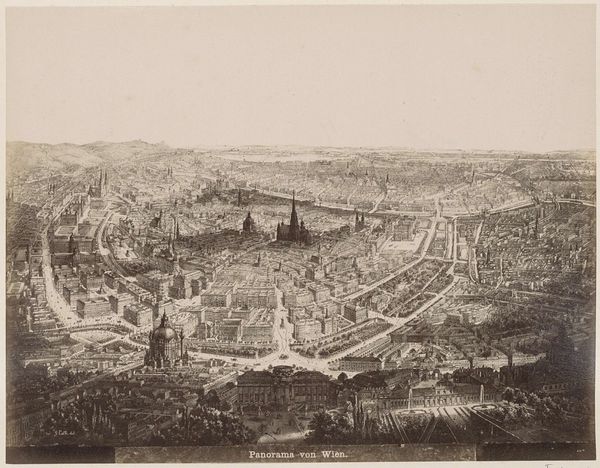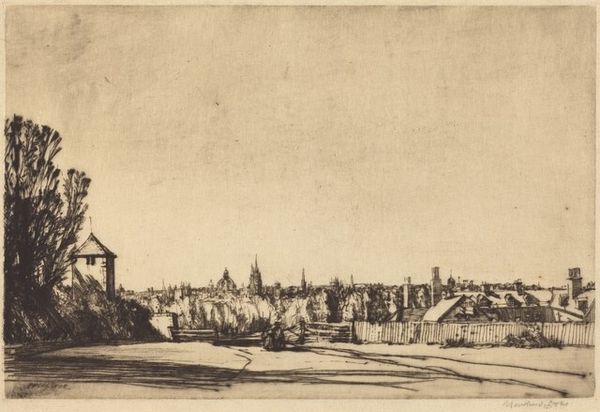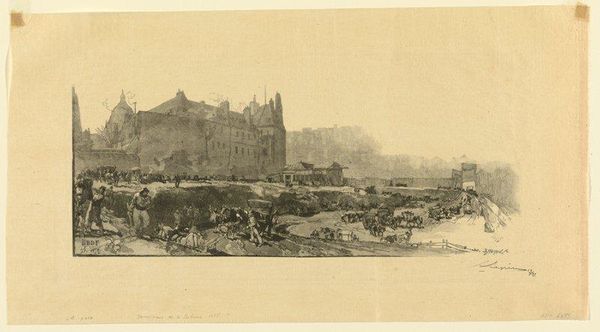
drawing, pencil
#
drawing
#
pencil drawing
#
pencil
#
cityscape
#
realism
Dimensions: height 239 mm, width 992 mm
Copyright: Rijks Museum: Open Domain
Curator: Ah, here we have "Gezicht op Rees, 1672" a pencil drawing by the Moreau brothers, though created much later, between 1900 and 1903. It captures Rees with a sort of delicate fondness. What leaps out at you? Editor: Well, immediately I see layers—land, water, then more land—all rendered in a rather economical pencil style. You really sense the work of representing depth and distance. The flatness of the medium kind of highlights it. Curator: Exactly! It feels as though they're not just rendering a place, but the very act of perceiving it, the labor of representing a three-dimensional world with something so simple. Rees isn't just *there*; it's carefully considered. Editor: Considered and produced. Think about the graphite, how it was mined, processed into pencils. Someone had to shape that wood, too. Even the paper – a whole history of cotton, linen, rags transformed! It's all labor embedded within the drawing. Do you see the paper as the foundation? Curator: I like that! And yes, I do. But I'm drawn in by what’s above: the ghost of a memory, really, softened with the years. Like trying to grasp the hem of a half-forgotten dream... There's an ineffable melancholy about it. Perhaps thinking about how history fades into myth over time. Editor: And that process relies entirely on these very concrete materials, pencils of different hardnesses, erasers correcting and layering, the slow erosion of the graphite onto the page itself! Even time is marked here materially. The drawing becomes its own historical object reflecting all that. Curator: Perhaps that's the bittersweet truth – we leave our marks, however faint. Thank you for helping me see it with new eyes, it's a simple drawing, and yet such a delicate study of time and space and effort. Editor: Likewise. It makes me reflect upon art as a product of time and labor and a witness to historical social processes. This isn't simply a record of the landscape, it is itself the material embodiment of the historical processes by which that record comes into existence.
Comments
No comments
Be the first to comment and join the conversation on the ultimate creative platform.
